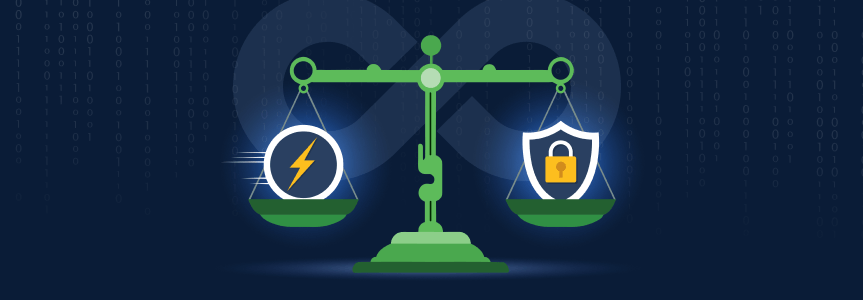How to Combine Speed and Trust in Enterprise Software Development
The challenge of keeping DevOps and SecOps aligned in complex enterprise development environments requires a platform that serves as the single source of truth
Software development begins with code, which is then integrated, compiled, tested, and in the end distributed to users. This is often the secret sauce of innovation that organizations must protect to keep their competitive edge.
With the software application development market growing at almost 30% per year and the average project taking just 4-6 months to complete – and trending downwards – the result is more software to develop and constant pressure to release it as fast as possible.
On the other side of the equation is the demand for security, which is now being addressed at the earliest stages of development, making trust a key objective for DevOps teams. Building this trust has become more challenging than ever, with 86% of software engineers working remotely and 90% relying on Open Source code.
In essence, we have reached a situation where software development has now become a balancing act of Speed vs Trust.
Evolution of the Development Process
Today, few projects are based solely on native code. To meet tighter deadlines and leverage existing solutions, most developers take advantage of open source and third-party software.
In many organizations, OSS is heavily leveraged to build better, faster and cost-efficient code, which is then used to create applications. Both native and open-source code are compiled into a single software package, which one can call the “binary of binaries”. These binaries bring together everything that makes up the resulting application.
Conversely, since binaries are the final result, they also contain all the information about which artifacts were used to compile the binary in the first place. So in a sense, one can say that if you know what’s in a binary, you know everything.
Formula 1 drivers and their pit crew are a great example of combining speed and trust.
Providing DevOps Speed with SecOps Security
As one of the most reliable sources for knowing what’s inside a software package, especially potential OSS vulnerabilities, managing and controlling and managing binaries from start to finish, is the key to speed, security and scale of software development.
Securing the Software Supply Chain is critical, and this calls for a holistic approach to the entire software development life cycle (SDLC) – from coding and compilation through to updates and distribution.
The purpose is not to implement another layer of management or security but rather to achieve the ultimate goal of delivering trusted software releases as quickly as possible.
Software Supply Chain Platforms are Key to Achieving Speed & Trust
The best way to manage and secure software development is by deploying a unified Secure SDLC platform. It is the optimal solution for:
- Managing the development environment from coding, through compilation and distribution
- Identifying and mitigating threats resulting from known and unknown vulnerabilities across the supply chain
- Integrating security with a seamless developer experience for fast and secure packages and updates
A comprehensive platform solution should fortify evolving software artifacts against blind spots that can not be discovered by source code analysis alone. Likewise, siloed security tools can help spot specific vulnerabilities, but only a holistic solution can ensure that code is secure at every stage of the development process.
The platform should continuously analyze the code and binaries in their production context to generate swift and trusted application releases. Likewise, post-release, there should be continuous monitoring of updates and upgrades to ensure successful CI/CD operations.
Take Aways
For DevOps professionals, securing the Software Development LifeCycle (SDLC) has become a must-have. For most environments, a loose conglomeration of tools is not sufficient and a unified platform approach from coding, through compilation, distribution and update is the only architecture that incorporates security without compromising on development speed.
Development environments are an attack vector for today’s hackers and bad actors. The myriad tools and processes, compounded by the massive amount of open source libraries and binaries, introduce opportunities for injection of risk across the software supply chain.
The right solution should ensure that both DevOps have the tools to develop efficiently and answer business requirements, while SecOps safeguards the security of the entire software development process. For a good example of how an SDLC platform works, schedule a JFrog Artifactory demo to see how DevOps and SecOps can make speed and trust work together.







